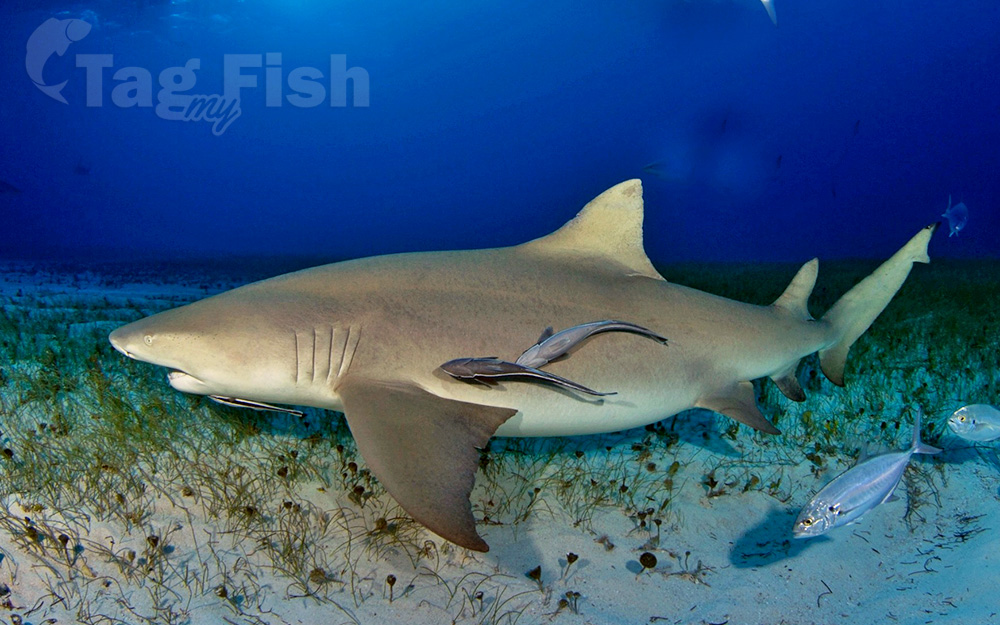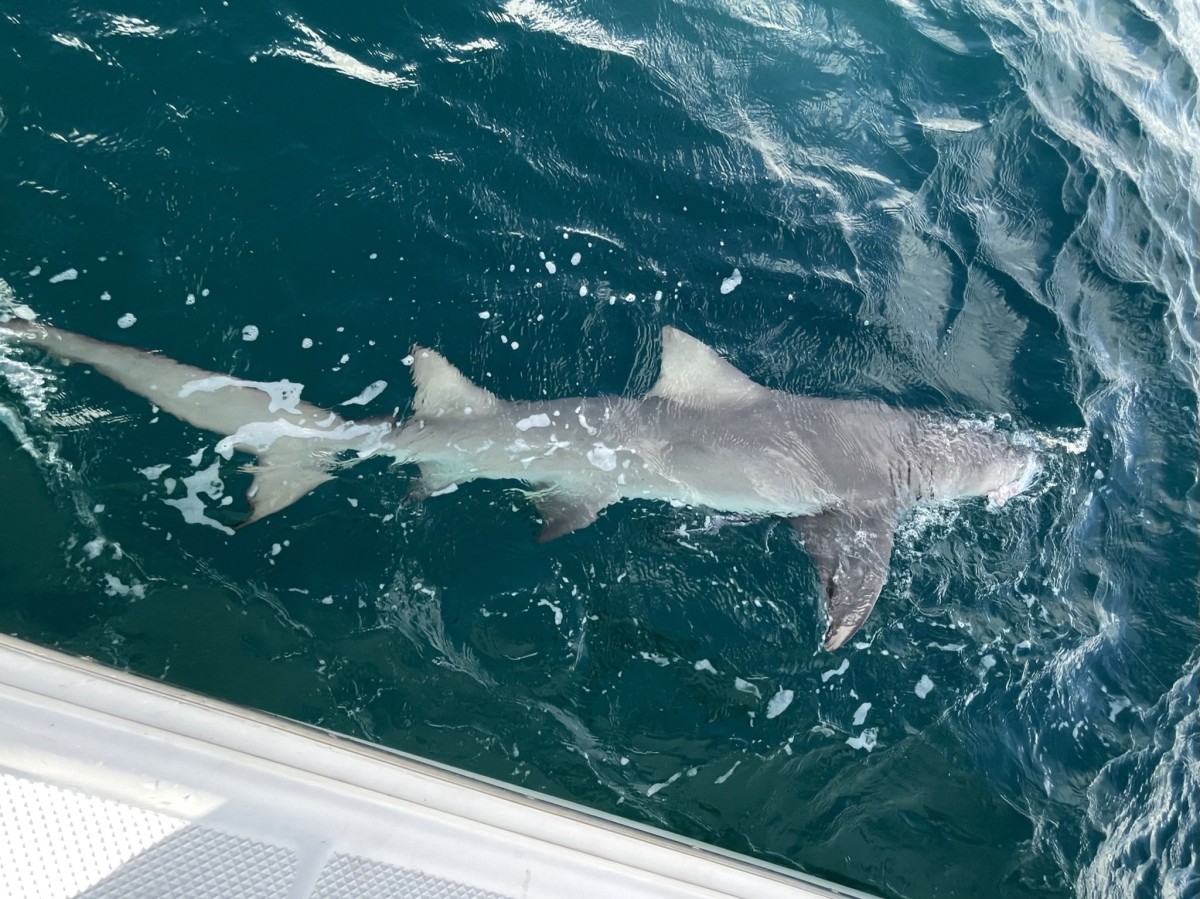Lemon shark
(Negaprion brevirostris)

Classification
General data
The lemon shark (Negaprion brevirostris) is a species of shark from the family Carcharhinidae and is classified as a Vulnerable species by the International Union for the Conservation of Nature.
Lemon sharks can grow to 3,4 meters (11 ft) in length. They are often found in shallow subtropical waters and are known to inhabit and return to specific nursery sites for breeding. Often feeding at night, these sharks use electroreceptors to find their main source of prey: fish. Lemon sharks enjoy the many benefits of group living such as enhanced communication, courtship, predatory behavior, and protection. This species of shark gives birth to live young, and the females are polyandrous and have a biennial reproductive cycle. Lemon sharks are not thought to be a large threat to humans. The lemon shark life span is unknown, but the average shark is 25 to 30 years old.
The shark yellow coloring serves as an excellent camouflage when swimming over the sandy seafloor in its coastal habitat. The lemon shark commonly attains a length of 2.4 to 3.1 m (7.9 to 10.2 ft) and a weight up to 90 kg (200 lb) by adulthood, although sexual maturity is attained at 2.24 m (7.3 ft) in males and 2.4 m (7.9 ft) in females.
The maximum recorded length and weight is 3.43 m (11.3 ft) and 183.7 kg (405 lb), respectively.[8] It has a flattened head with a short, broad snout, and the second dorsal fin is almost as large as the first. Lemon sharks, as any other species of shark, have electroreceptors concentrated in their heads, called the ampullae of Lorenzini. These receptors detect electrical pulses emitted by potential prey and allow these nocturnal feeders to sense their prey in the dark.
Distribution
Lemon sharks are found from New Jersey to southern Brazil in the tropical western Atlantic Ocean. They also live off the coast of west Africa in the southeastern Atlantic. In addition, lemon sharks have been found in the eastern Pacific, from southern Baja California to Ecuador. This species of shark often occupies the subtropical shallow waters of coral reefs, mangroves, enclosed bays, and river mouths; however, lemon sharks have also been found in the open ocean down to depths of 92 meters (301 feet.) Although lemon sharks do swim up rivers, they never seem to travel very far into fresh water. They are found in open water primarily during migrations, and tend to stay along the continental and insular shelves for most of their lives.












